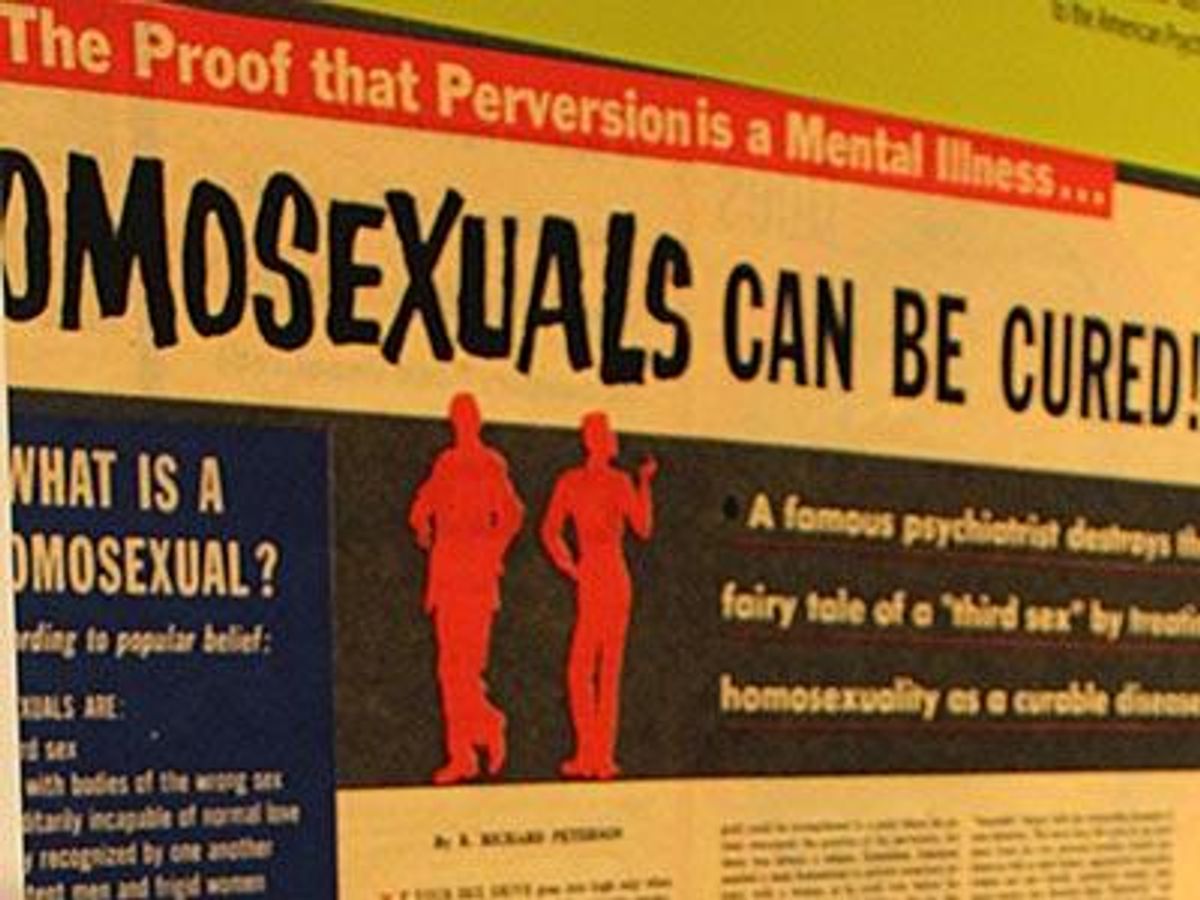 Fifty years ago, on July 4, 1965, LGBT activists staged the first Annual Reminder demonstration. They gathered in front of Philadelphia's Independence Hall, the site of the signing of the Declaration of Independence and the drafting of the U.S. Constitution. The march was intended to demonstrate that LGBT people are entitled to constitutional protection.
Fifty years ago, on July 4, 1965, LGBT activists staged the first Annual Reminder demonstration. They gathered in front of Philadelphia's Independence Hall, the site of the signing of the Declaration of Independence and the drafting of the U.S. Constitution. The march was intended to demonstrate that LGBT people are entitled to constitutional protection.
During the 50 years since, the LGBT movement has gained significant traction in America's constitutional dialogue, winning victories in several Supreme Court cases that struck down laws limiting the rights of LGBT people. This summer, the Supreme Court will decide whether the Constitution also requires states to recognize same-sex marriages.
To commemorate the 50th anniversary of the first Annual Reminder march, the National Constitution Center is hosting "Speaking Out for Equality: The Constitution, Gay Rights, and the Supreme Court," an exhibition created in partnership with the William Way LGBT Community Center. "Speaking Out for Equality" will chronicle the movement and the ongoing debate over how much protection is offered by the Constitution.
Speaking Out for Equality: The Constitution, Gay Rights
At the National Constitution Center
Opens Friday; runs through September 7
Below and on the following pages are some preview photos of the exhibit:
 - Installation of artifacts in the National Constitution Center's newest feature exhibition, "Speaking Out for Equality: The Constitution, Gay Rights, and the Supreme Court".
- Installation of artifacts in the National Constitution Center's newest feature exhibition, "Speaking Out for Equality: The Constitution, Gay Rights, and the Supreme Court".
 - Radical Measures--reserved for the most mentally disturbed--included the use of lobotomy instruments to "cure" homosexuality.
- Radical Measures--reserved for the most mentally disturbed--included the use of lobotomy instruments to "cure" homosexuality.
 Annual Reminder Day programs
Annual Reminder Day programs
 - Philadelphia (1993) was one of the first mainstream Hollywood films to recognize the HIV/AIDS epidemic. It also addressed homophobia, and the simple idea that getting to know someone who is different than you can make you a better person.
- Philadelphia (1993) was one of the first mainstream Hollywood films to recognize the HIV/AIDS epidemic. It also addressed homophobia, and the simple idea that getting to know someone who is different than you can make you a better person.
 The setup of the exhibit in progress
The setup of the exhibit in progress
 Protests ignite a revolution.
Protests ignite a revolution.
 Rising voices and rising reactions: the 1970s and 1980s
Rising voices and rising reactions: the 1970s and 1980s
 Mounting the original dress: Barbara Gittings, a key organizer of the protests, wore this dress to appear conservative and conform to the 1960s gender norms. Original protest photo taken by Kay Lahusen
Mounting the original dress: Barbara Gittings, a key organizer of the protests, wore this dress to appear conservative and conform to the 1960s gender norms. Original protest photo taken by Kay Lahusen



 Fifty years ago, on July 4, 1965, LGBT activists staged the first Annual Reminder demonstration. They gathered in front of Philadelphia's Independence Hall, the site of the signing of the Declaration of Independence and the drafting of the U.S. Constitution. The march was intended to demonstrate that LGBT people are entitled to constitutional protection.
Fifty years ago, on July 4, 1965, LGBT activists staged the first Annual Reminder demonstration. They gathered in front of Philadelphia's Independence Hall, the site of the signing of the Declaration of Independence and the drafting of the U.S. Constitution. The march was intended to demonstrate that LGBT people are entitled to constitutional protection. - Installation of artifacts in the National Constitution Center's newest feature exhibition, "Speaking Out for Equality: The Constitution, Gay Rights, and the Supreme Court".
- Installation of artifacts in the National Constitution Center's newest feature exhibition, "Speaking Out for Equality: The Constitution, Gay Rights, and the Supreme Court". - Radical Measures--reserved for the most mentally disturbed--included the use of lobotomy instruments to "cure" homosexuality.
- Radical Measures--reserved for the most mentally disturbed--included the use of lobotomy instruments to "cure" homosexuality. Annual Reminder Day programs
Annual Reminder Day programs - Philadelphia (1993) was one of the first mainstream Hollywood films to recognize the HIV/AIDS epidemic. It also addressed homophobia, and the simple idea that getting to know someone who is different than you can make you a better person.
- Philadelphia (1993) was one of the first mainstream Hollywood films to recognize the HIV/AIDS epidemic. It also addressed homophobia, and the simple idea that getting to know someone who is different than you can make you a better person. The setup of the exhibit in progress
The setup of the exhibit in progress Protests ignite a revolution.
Protests ignite a revolution. Rising voices and rising reactions: the 1970s and 1980s
Rising voices and rising reactions: the 1970s and 1980s Mounting the original dress: Barbara Gittings, a key organizer of the protests, wore this dress to appear conservative and conform to the 1960s gender norms. Original protest photo taken by Kay Lahusen
Mounting the original dress: Barbara Gittings, a key organizer of the protests, wore this dress to appear conservative and conform to the 1960s gender norms. Original protest photo taken by Kay Lahusen
















































































